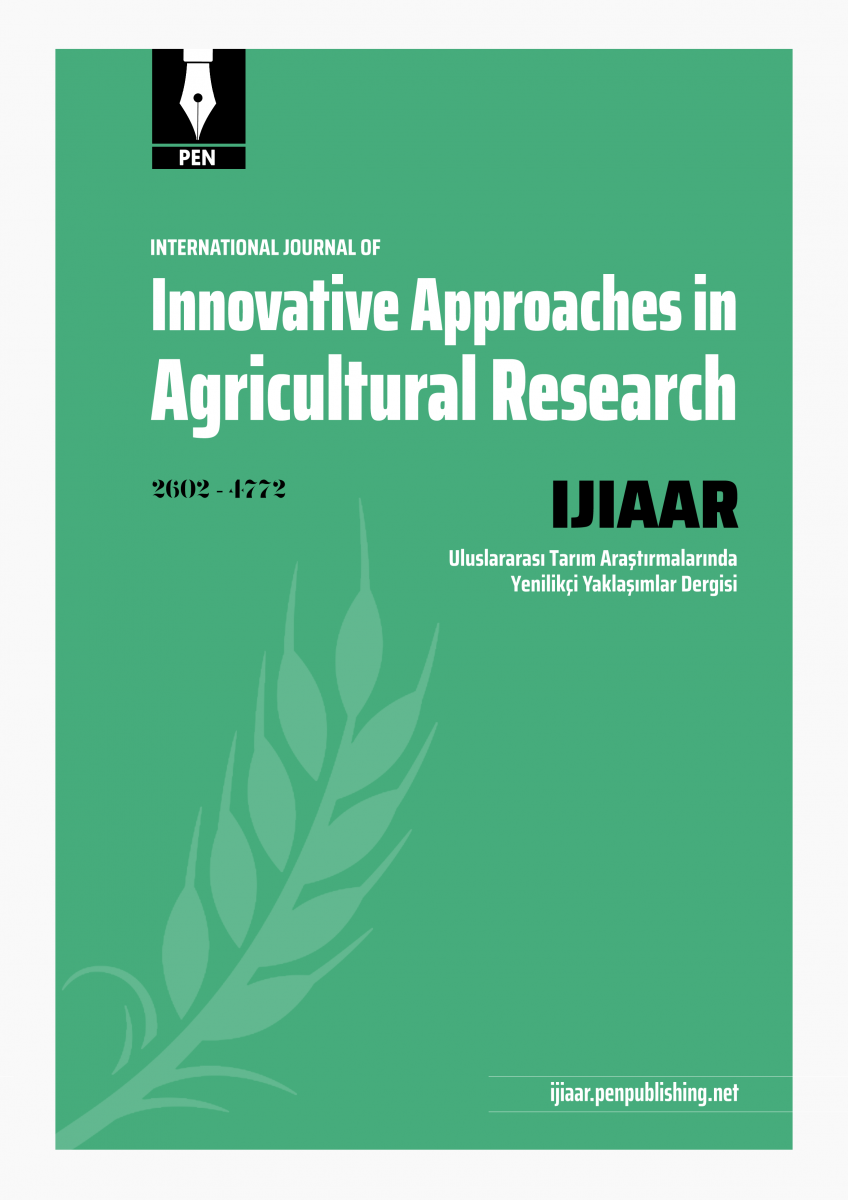- AOCS 2013. AOCS Official Method Cd 12b-92. Revised 2013. Oil Stability Index (OSI). [Google Scholar]
- Aristoil Capitalisation 2020, Olive oil from academia to industry, Aristoil Capitalisation Project Book, Ankara [Google Scholar]
- Bellini, E., Giordani, E., Rosati, A. (2008). Genetic improvement of olive fromclonal selection to cross-breeding programs. Advances Horticultural Science 22,73-86. [Google Scholar]
- Bilušić, T., Žanetić, M., Ljubenkov, I., Mekinić, I. G., Štambuk, S., Bojović, V., ... & Magiatis, P. (2018). Molecular characterization of Dalmatian cultivars and the influence of the olive fruit harvest period on chemical profile, sensory characteristics and oil oxidative stability. European Food Research and Technology, 244(2), 281-289. [Google Scholar]
- Boskou, D. (2006). Olive oil, chemistry and technology. American Oil Chemists’ Society Press, p.176, New York. [Google Scholar]
- Cemeroglu, B. (2007). Food analysis. Ankara: Bizim Büro Publication. [Google Scholar]
- Communique No: 2014/53. Turkish Food Codex Olive Oil and Olive Oil Analysis Methods Communiqué, Official newspaper, Issue: 29181. [Google Scholar]
- Communique No: 2017/26, Turkish Food Codex Olive Oil and Pomace Oil Communique, Official newspaper, Issue: 30183 [Google Scholar]
- Di Lecce, G., Piochi, M., Pacetti, D., Frega, N. G., Bartolucci, E., Scortichini, S., & Fiorini, D. (2020). Eleven monovarietal extra virgin olive oils from olives grown and processed under the same conditions: effect of the cultivar on the chemical composition and sensory traits. Foods, 9(7), 904. [Google Scholar]
- Essid, F., Sifi, S., Beltrán, G., Sánchez, S., & Raïes, A. (2016). Sensory and volatile profiles of monovarietal North Tunisian extra virgin olive oils from ‘Chetoui’cultivar. Journal of oleo science, ess15297. [Google Scholar]
- Fernandes, G. D., Ellis, A. C., Gámbaro, A., & Barrera-Arellano, D. (2018). Sensory evaluation of high-quality virgin olive oil: Panel analysis versus consumer perception. Current Opinion in Food Science, 21, 66-71. [Google Scholar]
- Kiritsakis, A.K. (1998). Composition of olive oil: Olive oil from the tree to the table. 2th Ed. Food & Nutrition Press Inc USA [Google Scholar]
- Laaribi I. Meaghani-Aiachi M. and Mars M. (2014). Phenotypic diversity of some olive tree progenies issued from a Tunisian breeding program. European Scientific Journal, 10: 292-313. [Google Scholar]
- Peres, F., Martins, L. L., Mourato, M., Vitorino, C., & Ferreira-Dias, S. (2016). Bioactive compounds of Portuguese virgin olive oils discriminate cultivar and ripening stage. Journal of the American Oil Chemists' Society, 93(8), 1137-1147. [Google Scholar]
- Reboredo-Rodríguez, P., González-Barreiro, C., Cancho-Grande, B., Valli, E., Bendini, A., Toschi, T. G., & Simal-Gandara, J. (2016). Characterization of virgin olive oils produced with autochthonous Galician varieties. Food Chemistry, 212, 162-171. [Google Scholar]
- Rodrigues, N., Casal, S., Peres, A. M., Baptista, P., & Pereira, J. A. (2020). Seeking for sensory differentiated olive oils? The urge to preserve old autochthonous olive cultivars. Food Research International, 128, 108759. [Google Scholar]
- Roodaki, M. M., Sahari, M. A., Tarzi, B. G., Barzegar, M., & Gharachorloo, M. (2018). Bioactive compounds of virgin olive oil extracted from bladi and arbequina cultivars. Current Nutrition & Food Science, 14(1), 17-27. [Google Scholar]
- Serrano, A., De la Rosa, R., Sánchez-Ortiz, A., Cano, J., Pérez, A. G., Sanz, C., ... & León, L. (2020). Chemical components influencing oxidative stability and sensorial properties of extra virgin olive oil and effect of genotype and location on their expression. LWT, 110257. [Google Scholar]
- Veloso, A. C., Rodrigues, N., Ouarouer, Y., Zaghdoudi, K., Pereira, J. A., & Peres, A. M. (2020). A kinetic‐thermodynamic study of the effect of the cultivar/total phenols on the oxidative stability of olive oils. Journal of the American Oil Chemists' Society. [Google Scholar]
- Yu, L., Wang, Y., Wu, G., Jin, J., Jin, Q., & Wang, X. (2020). Quality and composition of virgin olive oils from Indigenous and European cultivars grown in China. Journal of the American Oil Chemists' Society, 97(4), 341-353. [Google Scholar]
|

